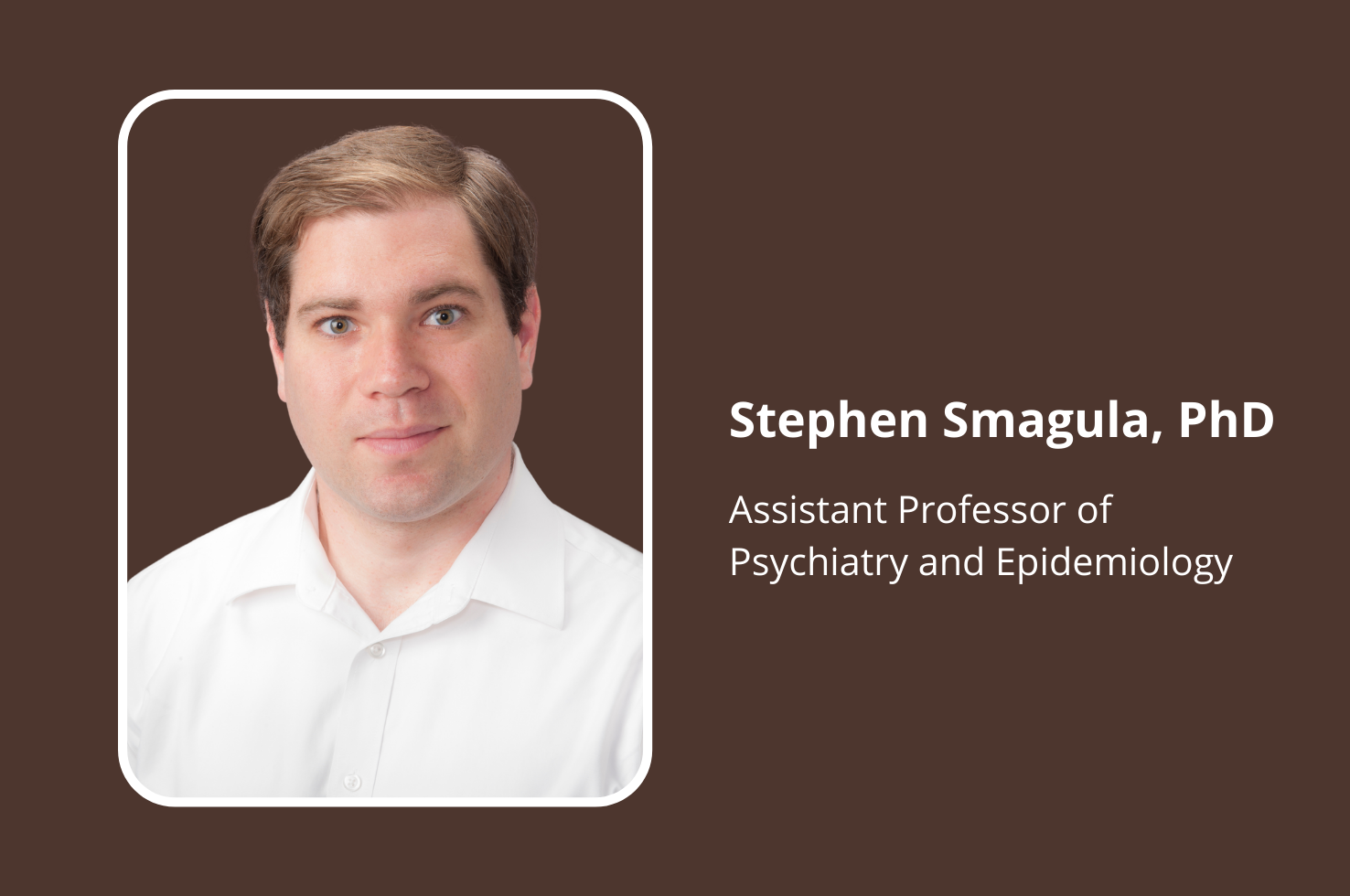Spotlight: Circadian Rest-Activity Rhythm and Risk for Depression

Dr. Stephen Smagula, (Assistant Professor of Psychiatry), did his doctoral work in epidemiology, followed by postdoctoral training in geriatric psychiatry and sleep research. Currently, his research focuses on the association between circadian activity pattern disruptions and depression in older adults, including those who are caregivers for individuals with dementia. Dr. Smagula is the 2022 recipient of the American Association for Geriatric Psychiatry Barry Lebowitz Early Career Scientist Award.
He spoke to us about his highly translational research and the development of wearable technology designed to measure circadian rest-activity rhythm.
What is circadian rest-activity rhythm?
Circadian rest-activity rhythm refers to a person’s regular daily 24-hour pattern of being active and resting. We each have a different profile; for example, some of us have fairly stable rhythms that are the same from day to day, and others tend to be less consistent.
Essentially, if you’re a mammal, rest-activity rhythm is important to your health! It can contribute to major health outcomes such as depression, dementia, and mortality. And although rest-activity rhythms can be tremendously informative about health and health risks, disturbances are usually not detected in therapeutic practice.
What are you looking at in your research on rest-activity rhythm?
When I was doing my PhD, I was looking for behavior that could be modified to prevent disease, and I was interested in depression in older adults. We found that measuring rest-activity rhythm patterns helped us predict which subjects would get depressed over time. It became clear to me that above and beyond sleep activity, the rest-activity rhythm can confer risk and resilience for health problems. The idea is that regardless of what causes certain rest-activity rhythm, having a disrupted rest-activity patterns can worsen health conditions. There is a bidirectional relationship.
Dementia caregivers are at high risk for depression. During my National Institute of Mental Health-funded K01 award, we studied which rest-activity rhythms were associated with depression symptoms. The data pointed, in particular, to difficulties with getting up and getting going in the morning. While depression makes it hard to get up, staying in bed has consequences that may include fragmented REM sleep, which can allow a negative emotional state to persist. Sometimes the wheels of your mind can start turning, but maybe because you feel tired, behaviorally you’re staying inactivated. Often, it would be better to just get going.
How do you measure their rest-activity rhythm?
Traditionally we use research devices that require wires and advanced statistical software to use. But recently I’ve been developing a new method I called the Circadian Activity Profiling System (CAPS). The CAPS sends data from a wearable smartwatch to a smartphone, and then to a web-based system for computations, storage, and retrieval of rest-activity rhythm data.
You mentioned modifiable behaviors. Do you ask people to change their rhythms?
Our activity rhythms can be shaped to meet environmental demands, but this can be particularly challenging in the context of dementia. People who have dementia may want to sit all day and end up being up at night, which can be very stressful for the caregiver.
So yes, we can deliberately choose when to be active. In my current research, we’re targeting morning activity deficits using an intervention called Scheduling Activity and Monitoring Mornings (SAMM). We adapted SAMM from an established behavioral activation package. Our pilot data show that just six weekly sessions of morning activity scheduling and monitoring reduced difficulty getting going by over 50% on average.
What are the benefits of having this kind of data?
Obtaining this information for an individual over repeated 24-hour periods could enhance our ability to monitor for risk of health outcomes such as depression, and improve our ability to provide adaptive interventions. These real-time assessments could also enhance existing interventions that address rhythm disruption, such as prescribed timing of activities including exercise and bright light exposure. Many people already wear these devices, so we have a great opportunity to maximize their potential for contributing to overall health.
Thank you for speaking with us, Dr. Smagula!
